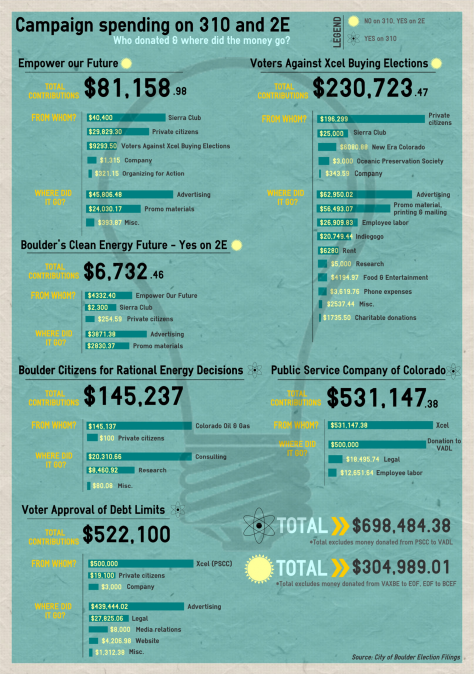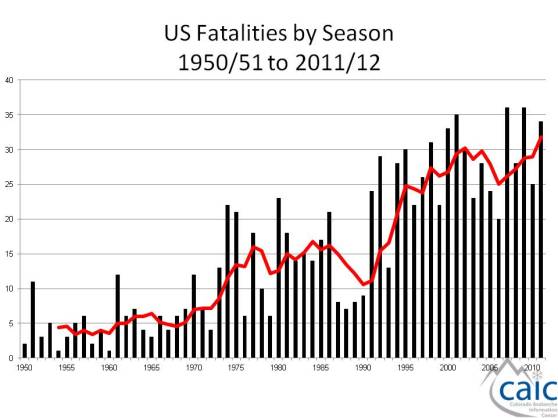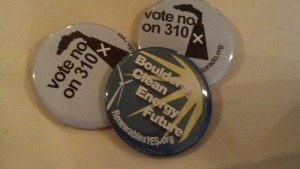By Gloria Dickie
“Xcel can go to hell.”
Although it may not have been the most politically correct way to phrase it, this sentiment, uttered by deputy mayor Lisa Morzel, seemed to encapsulate the spirit of Hotel Boulderado Tuesday night, when ballot measure 310 was shot down.
With less than a third of voters voting in favor of the Xcel Energy-sponsored measure, Boulder citizens made it clear to the Minnesota-based corporation they wanted to pursue clean energy.

Hotel Boulderado // Gloria Dickie
The measure, often described as a “Trojan horse” by renewable energy groups, would have seen limits placed on the amount of utility debt the city could incur, as well as restrictions placed on extending a municipal utility service to areas outside city limits.
“This is about a measure put on the ballot by a company simply trying to protect its profits,” Steve Fenberg, executive director of New Era Colorado Foundation, explained Monday night. The organization has been a central figure in the municipalization debate in recent months, raising close to $230,000 for the cause, knocking on hundreds of doors and making thousands of phone calls to Boulder citizens.
With campaign signs piled in the corner, ‘Pick a Side’ stickers plastered on the walls and a chorus of anti-310 phone pitches providing an audible accompaniment, New Era Colorado’s headquarters, located on Spruce Street, was buzzing with anticipation Monday night — the eve of the election.
“We didn’t really leave a lot of stones unturned. We’ve been targeting older voters, middle-aged voters, young voters,” Fenberg said while rifling through a pile of mail-outs on his desk.
And their hard work paid off. Greeted by a round of cheers, whoops and applause, the group arrived at the Hotel Boulderado midway through election results Tuesday.
“I think Boulder voters are smart — they researched the issue going in and they voted the right way,” Fenberg said, unable to keep from smiling.
Crystal Gray, a former city councilor who saw the original municipalization question put on the ballot in 2011, described the win as bittersweet, as she hadn’t been able to follow the effort through during her time on council.
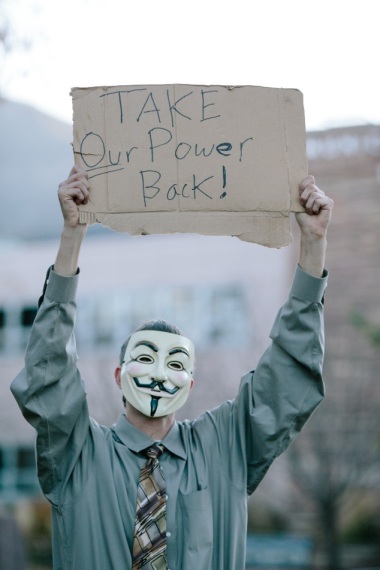
Under the Flatirons / Kirsten Ellis
“This is kind of overwhelming — I thought it was going to be close,” she said, proudly sporting a green ‘I Love Local Power!’ button.
Conceding defeat at 8:25 p.m., Voter Approval of Debt Limits, the Xcel-backed group pushing for a ‘yes’ on 310, released their official statement, calling the outcome a “partial win.”
“Had we not put Question 310 on the ballot, the city never would have contemplated including the voters in the utility debt decisions,” Meg Collins, founder of VADL, said.
However, Collins noted this was the second vote where the city “believes they can impose their will on county voters and force them to help pay for the city’s utility. It also marks the second election where county voters were excluded from having any say in the decision.”
Others, too, were unimpressed by the outcome.
Kevin Hotaling, a city council hopeful and the only candidate not in favor of municipalization, cautioned against celebrating too soon.
Standing amid a small crowd at West Flanders Brewing Co., Hotaling expressed doubt that creating a city utility would fall under the projected $214 million.
“I think the people who put it on the ballot might be cheering right now because they think they won,” he said. “But the reason they don’t know they didn’t win is because they have no business experience whatsoever, and they don’t understand the tech world.”
In the end, Hotaling said, the move toward municipalization will “almost certainly” require another vote.
Back at Hotel Boulderado the celebrations continued. A string quintet strummed mellow music in the corner of the mezzanine while waiters chaperoned hors d’oeuvres around the room.
Leslie Glustrom, research director for Clean Energy Action, has been one of the community’s more vocal opponents of 310.
“We all deserve a huge amou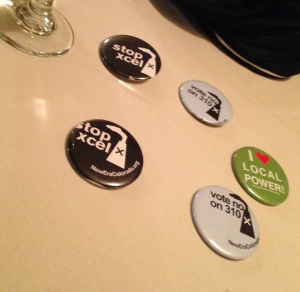 nt of credit,” she said. “But on the other hand it’s really dastardly that we’ve had to spend all this time and money to battle a large corporation yet again. That just because a corporation has bottomless legal and financial pockets they can force a community to spend this amount of time and money trying to defend what we already did in 2011 is sickening.”
nt of credit,” she said. “But on the other hand it’s really dastardly that we’ve had to spend all this time and money to battle a large corporation yet again. That just because a corporation has bottomless legal and financial pockets they can force a community to spend this amount of time and money trying to defend what we already did in 2011 is sickening.”
Fenberg, however, took a more optimistic approach toward the measure.
“This ballot measure engaged the community in such a deeper way. Xcel would have been better off just not doing this ballot measure.”
While Boulder won’t be the first city to create local electric utility — 29 already exist in the state of Colorado, and there are thousands across the nation — it could earn the title of being the first to break off from a big utility for the sole reason of addressing climate change.
Quick facts:
– 31.12% in favour of Ballot 310
– 68.88 against Ballot 310
– 30,634 total votes on 310
– 66.52% in favour of 2E
– 33.48% against 2E
– 28,503 total votes on 2E
